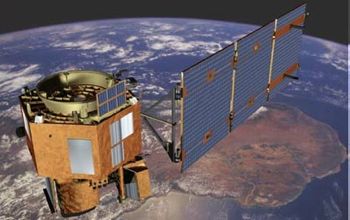
Home - Search - Browse - Alphabetic Index: 0- 1- 2- 3- 4- 5- 6- 7- 8- 9
A- B- C- D- E- F- G- H- I- J- K- L- M- N- O- P- Q- R- S- T- U- V- W- X- Y- Z
EO-1
 EO-1 Credit: Manufacturer Image |
Status: Operational 2000. First Launch: 2000-11-21. Last Launch: 2000-11-21. Number: 1 . Gross mass: 566 kg (1,247 lb).
Complementing the New Millennium's Deep Space series, EO-1 was a NASA-Goddard satellite which demonstrated technology for the next generation Landsat. It flew in formation with Landsat-7 for comparison purposes, using a hydrazine thruster to adjust its orbit. The satellite used a MIDEX-derived bus built by Swales Aerospace; dry mass was 566 kg. The main instruments were ALI (Advanced Land Imager) and the Hyperion 220-band imaging spectrometer.
More at: EO-1.
Family: Earth, Earth land resource sat. Country: USA. Launch Vehicles: Thor, Delta, Delta 2 7000, Delta 7320-10. Launch Sites: Vandenberg, Vandenberg SLC2W. Agency: NASA Greenbelt, Swales. Bibliography: 2, 552, 554, 6480, 12318.
2000 November 21 - . Launch Site: Vandenberg. Launch Complex: Vandenberg SLC2W. LV Family: Thor. Launch Vehicle: Delta 7320-10.
- EO-1 - .
Mass: 529 kg (1,166 lb). Nation: USA.
Agency: NASA Greenbelt.
Manufacturer: Swales.
Class: Earth.
Type: Earth resources satellite. Spacecraft: EO-1.
USAF Sat Cat: 26619 . COSPAR: 2000-075A. Apogee: 703 km (436 mi). Perigee: 702 km (436 mi). Inclination: 98.20 deg. Period: 98.80 min.
First use of a Delta dual payload attach fitting. The Earth Orbiter 1 satellite was part of NASA's New Millenium Program. Complementing the New Millenium's Deep Space series, EO-1 was a NASA-Goddard satellite which demonstrated technology for the next generation Landsat. It flew in formation with Landsat-7 for comparison purposes, using a hydrazine thruster to adjust its orbit. The satellite used a MIDEX-derived bus built by Swales Aerospace; dry mass was 566 kg. The main instruments were ALI (Advanced Land Imager) and the Hyperion 220-band imaging spectrometer. At 1835 GMT the Delta second stage completed its first burn and entered a 185 x 713 km x 98.2 deg transfer orbit. At 1920 GMT the orbit was circularised and EO-1 separated at 1925 GMT into a 682 x 729 km x 98.2 deg orbit.
Back to top of page
Home - Search - Browse - Alphabetic Index: 0- 1- 2- 3- 4- 5- 6- 7- 8- 9
A- B- C- D- E- F- G- H- I- J- K- L- M- N- O- P- Q- R- S- T- U- V- W- X- Y- Z
© 1997-2019 Mark Wade - Contact
© / Conditions for Use